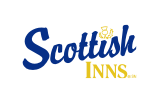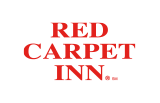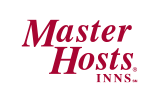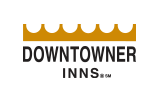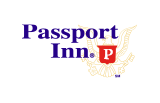By Ruben Reyes, Assurance & Marketing Program Director
Does the idea of having to figure out the formula for determining your break-even point post-pandemic have you tossing and turning at night? If it does, then you are not alone. In the 20 some odd years that I have been working in the lodging industry, I have only come upon a handful of hoteliers who truly understand and use the formula to maximize the property’s profits – and this was pre-pandemic.
During the current crisis, it is important to focus on your operational expenses. These are the operational costs for delivering the services of each revenue source (e.g., front office, back office, housekeeping, cleaning, maintenance and all your fixed and variable costs). Remember that, at this time, it is going to be difficult to know if your room expenses will increase or decrease because of the pandemic. This is obviously due to stricter standards, such as deep cleaning regimens and more sanitation requirements in all public areas that will require a higher frequency of sanitation than before. Some states like New Mexico are imposing a limitation of hotel occupancy and, as a result, many hoteliers are staggering rooms that are to be sold.
Some of the biggest mistakes I have seen hoteliers make in the past year have been the capacity to fail to communicate with their lending institutions, vendors and brands. In a recent conversation with a colleague of mine, he stressed the importance of having hoteliers reach out to their lending institution to see how it may help them. Having a very large portfolio that includes resorts and golf courses in Florida, he said that if it were not for his quick action to reach out to his lenders, he would have found himself in a great deal of financial woes. He also said that he felt that hoteliers who have decided not to pay their mortgage, utility bills and brand royalties were going to have a more difficult and longer recovery time than hoteliers who were approaching the pandemic with a more cautious perception and felt that these were all negative choices that have been made in the state of panic. We both agreed that a branded property is in the best position for any hotelier post-COVID, especially if you are a part of a brand that has the added value of a sales and marketing manager who will help guide you through the current state.
We all know that, regardless of your occupancy, whether you have been at 100%, 80% or have had to close out your hotel because of the pandemic, your biggest asset is still incurring costs in terms of your current debt, property taxes, mortgage, insurance payment, all your utility’s costs combined, employee pay and brand royalties. During this time, and all times when the economy has taken a turn, it is wise to limit your consumables (shower caps, pens, pencils and that pesky little mint on the pillow) to reduce your break-even point.
In 2012, I visited a hotelier who was very excited to show me his property. As he walked me throughout the hotel, he pointed out all the improvements he had made, as he had just renovated the restaurant, common areas and only half of his room inventory. I naturally asked him why only half and he said he was only selling 50 rooms out of his 120-room inventory and that he had been between 70% to 100% occupancy for the past three years. Plus, his restaurant was making him so much money that he had no reason to sell the other rooms. At an ADR of $65 for both single and double rooms, I knew that I was going to find something in his P&L that he was not going to be happy with.
Unfortunately, he was taking from Peter to pay Paul. This is very common in the lodging industry, especially with properties that have different points of sale. As we sat in his office and started to analyze his P&L report, it did not take long for him to realize that he had initially calculated his break-even point at 120 rooms and not the 50 that he had been selling at a rate that was $5 under his break-even point, not to mention that he was also selling doubles at the same base.
A break-even analysis determines the level of occupancy that is required for a property to run, regardless if it loses or gains revenue. Many operators find it arduous to truly know if the hotel is maximizing its room revenue, as many hoteliers define their base rate by looking at their competitive set. If you have defined your comp-set, and are basing your rack against these properties, always keep in mind that they may not share the same monthly costs that you have. In other words, they may own the property while you may still have a mortgage payment, or their brand fees may be greater than yours, as they may be incurring fees that are associated with branded mandates such as fees for not responding to guest reviews, imposed PMS interface fees or a high percentage of the hotel’s monthly gross as a branded fee.
No matter what service level or extra amenities you may offer at your hotel, it is important to be able to determine how much of any amenity or service you must sell to achieve a profit. Because of the different fixed costs that are associated with the routine operations of a hotel, there is a specific point, both in terms of cash generated and room nights sold, where the hotel will start to realize a profit.
Until you can determine what the actual cost is to keep your hotel running with regards to actual rooms sold and revenue that is generated from different points of sale, you may consider any profits up to this point will be directed to your fixed costs to operate the hotel, as well as any variable costs that are incurred due to daily operations or rooms sold.
Total fixed costs: To calculate the break-even point for a given time period, a manager must first be able to calculate the total fixed costs that the hotel will incur. Total fixed costs are the sum of all the expenses that a hotel must pay for during a time period that will not fluctuate because of occupancy. Fixed costs may include mortgage and insurance expenses, salaries, property taxes, the payroll expenses of essential employees who must work even if the hotel has a low occupancy, and the expenses of the utilities that must be maintained even if the hotel has zero occupancy. With each of these expenses, the amount will not change, regardless of how many or how few rooms are sold.
Variable costs: You must then calculate your variable costs that are associated with selling each room. Variable expenses are only incurred if a room is sold or used. If the guestroom remains empty, there are no variable costs that the hotel must pay for. Variable costs for guestrooms will typically include the expense of labor and supplies to service the room after use.
Consider this, you have a 50-room property where your total nightly fixed costs are equal to (X) per room per night, and your variable costs are (Y) per room per night. Your variable costs are your utilities that are consumed by your guest, room amenities, extra time housekeeping spent deep cleaning and disinfecting all high touchpoints due to COVID. Your ADR is (Z).
Break-even per room would equal to your total fixed costs for the hotel ÷ ADR – your variable costs per room. (X) ÷ (Z-Y) = the amount of rooms you need to sell before you may see a profit for one night.
Please note that your hotel’s break-even point occupancy level is the most important predicter post-COVID, as many are opening up their hotels for the first time in over a year at 100% occupancy since the pandemic started.

